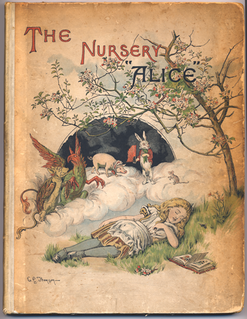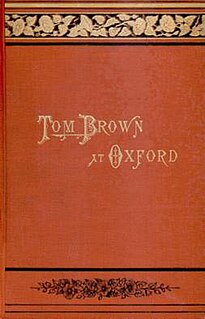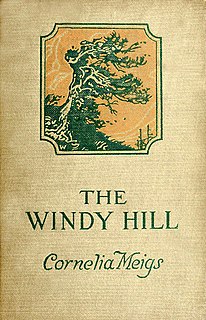 W
WThe Adventures of Danny Meadow Mouse (1915) is a children's novel written by Thornton W. Burgess and illustrated by Harrison Cady. The main character also appears in Mr. Toad and Danny Meadow Mouse Take a Walk and Danny Meadow Mouse Learns Something.
 W
WThe Adventures of Paddy the Beaver (1917) is a children's novel written by Thornton W. Burgess and illustrated by Harrison Cady.
 W
WThe Carved Lions (1895) is a book by British author Mary Louisa Molesworth. The book was first published by Macmillan and Company, London.
 W
WCelia, lo que dice is the first in the series of children's novels by Spanish author Elena Fortún. The novel is a collection of short stories first published in magazines in 1929. The stories, which were written from the perspective of a seven-year-old girl named Celia Gálvez de Montalbán, narrated the life of the protagonist living in Madrid with her family. Celia, who was an extremely popular character from her first appearance through the 1960s, was characterized as a girl who often questioned the world around her in ways that were both ingenuous and innocent. The novel was followed by several sequels through the 1930s and the 1950s, the last one published in 1987, thirty-five years after the death of the author. The first of these sequels was Celia en el colegio, first published in 1932. The series were both popular and successful during the time following their publication and are today considered classics of Spanish literature. The first three novels were adapted for television in 1992, in a series produced by José Luis Borau entitled Celia, which starred Cristina Cruz Mínguez in the title role.
 W
WDimsie Goes To School is the first of the Dimsie books by author Dorita Fairlie Bruce. It was first published in 1921 under the title The Senior Prefect and changed in 1925 to Dimsie Goes To School. The book was illustrated by Wal Paget.
 W
WDimsie Moves Up is the second of the Dimsie books by author Dorita Fairlie Bruce. First published in 1921, the book was illustrated by Wal Paget. The protagonist Dimsie is now a year older and had moved up one grade at the Jane Willard Foundation. The Western Morning News's review described it as "a book that should prove a delight to all school girls" and noted that school sports were featured and that "the rivalry between forms makes thrilling reading."
 W
WDoctor Dolittle's Garden (1927) is structurally the most disorganised of Hugh Lofting's Doctor Dolittle books. The first part would fit very well into Lofting's 1925 novel Doctor Dolittle's Zoo, which this book follows. The rest of the book forms a reasonably coherent narrative. From now on, Lofting would write the books in chronological order, and this book has to link the earlier, more light-hearted type of story with what was to come. The lack of structure is compensated for by Lofting's skill in subtly shifting the tone of his writing as the book progresses.
 W
WDoctor Dolittle's Post Office is the third of Hugh Lofting's Doctor Dolittle books. Set on the West Coast of Africa, the 1923 book follows the episodic format of most other books in the series. In the beginning of the book, Doctor Dolittle helps to capture a slave trader's ship, then organizes the postal service of a small African kingdom, Fantippo, ruled over by King Koko. Mobilizing migrating birds to carry people's mail from continent to continent, Doctor Dolittle effectively anticipates the 20th Century invention of air mail. Over the course of later chapters, he discovers a hidden island populated by prehistoric creatures, gets thrown into another African jail, invents animal alphabets, and defeats at least two armies. Each of the animals in the Dolittle family also tells a personal story. The postal program grows into a worldwide postal and publishing service for the benefit of animals everywhere.
 W
WDoctor Dolittle's Zoo was written and illustrated by Hugh Lofting in 1925. In the book, Doctor Dolittle returns from his voyages and sets his house in order. This includes expanding his zoo to include a home for crossbred dogs and a club for rodents. Doctor Dolittle's Zoo is different from all others because there are no cages; the animals stay there voluntarily and are free to leave whenever they want. The doctor also takes time to solve a mystery with the aid of Kling, the Dog Detective.
 W
WThe Enchanted Castle is a children's fantasy novel by Edith Nesbit first published in 1907.
 W
WA Flat Iron for a Farthing (1872) is a book by Juliana Horatia Ewing (1842-1885) and consists of childhood reminiscences of the only child of a widowed father. It was one of the author's most popular books.
 W
WFreddy Goes to Florida (1927), is the first of the Freddy the Pig books written by Walter R. Brooks. It tells how the animals of the Bean Farm traveled to Florida and back again, and their adventures on the way.
 W
WFreddy goes to the North Pole (1930) is the second of the Freddy the Pig books written by Walter R. Brooks. It tells of how the animals of the Bean Farm went to rescue some of their animals friends who went on an expedition to the North Pole.
 W
WFrom Nowhere to the North Pole is an 1875 children's novel by English author Tom Hood. Hood's book was one of the many Alice in Wonderland imitations published in the 19th century. In it the hero Frank has many strange adventures after falling asleep full of plum cake.
 W
WGypsy Breynton is the heroine of a series of books written by Elizabeth Stuart Phelps. The books were written in 1866–67 for Sunday schools and so are of an improving nature. Gypsy, as the name indicates, is an impetuous tomboy who lives a chaotic life lacking a system. Her development and experiences provide the basis for the restrained moralising of the stories. All that Mrs. Breynton said does not matter here; but Gypsy is not likely soon to forget it. A few words spoken, just as the conversation ended, became golden mottoes that helped her over many rough places in her life. "It is all the old trouble, Gypsy,— you 'didn't think.' A little self-control, a moment's quiet thought, would have saved all this." "Oh, I know it!" sobbed Gypsy. "That's what always ails me. I'm always doing things, and always sorry for them. I mean to do right, and I cannot remember. ... What shall I do with myself, mother?"
 W
WThe House of Arden is a novel for children, written in 1908 by English author Edith Nesbit.
 W
WJack and Jill: A Village Story by Louisa May Alcott, is a children's book originally published in 1880. It takes place in a small New England town after the Civil War. The story of two good friends named Jack and Janey, Jack and Jill tells of the aftermath of a serious sledding accident.
 W
WKhirer Putul is a children's fantasy novel written by Abanindranath Tagore in 1896. Khirer Putul is considered a masterpiece and landmark by writers in Bengali language children's literature. Khirer Putul is a simple and touching tale about the sugar doll, the fate of Duorani and a tricky and extraordinary monkey. Aadi Brahmosamaj press first published this book. Later on, it was translated into other languages. The story was adapted into a TV series of the same name.
 W
WThe Lost Prince is a novel by British-American author Frances Hodgson Burnett, first published in 1915.
 W
WMagic for Marigold (1929) is a novel written by L. M. Montgomery. It is an expansion of 4 linked short stories Montgomery wrote and originally published in 1925.
 W
WMrs. Overtheway's Remembrances (1869) is the first children's book published by author Juliana Horatia Ewing (1841-1885). The book was published by George Bells and Sons, York Street, Covent Garden, London, and had illustrations by J.A. Pasquier and J. Wolf.
 W
WThe Nursery "Alice" (1889/90) is a shortened version of Alice's Adventures in Wonderland (1865) by Lewis Carroll, adapted by the author himself for children "from nought to five". It includes 20 of John Tenniel's illustrations from the original book, redrawn, enlarged, coloured – and, in some cases, revised – by Tenniel himself. The book was published by Macmillan a quarter-century after the original Alice. It featured new illustrated front and back covers in full colour by E. Gertrude Thomson, who was a good friend of Dodgson. The book was 'engraved and printed' by the famous colour printer Edmund Evans.
 W
WOwd Bob: The Grey Dog of Kenmuir, also titled Bob, Son of Battle for US editions, is a children's book by English author Alfred Ollivant. It was published in 1898 and became popular in the United Kingdom and the United States, though most of the dialogue in the book was written in the Cumbrian dialect. The name "Owd Bob" is a rendering of the phrase "Old Bob" in a dialect style.
 W
WThe Pietje Bell series of novels is a series of children's books written by the Dutch writer Chris van Abkoude. It's about a little boy who gets himself into trouble.
 W
WPollyanna Grows Up is a 1915 children's novel by Eleanor H. Porter. It is the first of many sequels to Porter's best-selling Pollyanna (1913), but is the only one written by Porter herself; the numerous later additions to the Pollyanna franchise were the work of other authors.
 W
WPoor Jack is a novel by the English author Frederick Marryat, published in 1840.
 W
WQueen Silver-Bell is the first in a series of four children's books by Frances Hodgson Burnett with illustrations by Harrison Cady.
 W
WThe Republic of ShKID is an adventure, partly autobiographical children's novel by L. Panteleyev and Grigori Belykh written in 1926 and printed in 1927.
 W
WSmoky the Cowhorse is a novel by Will James that was the winner of the 1927 Newbery Medal.
 W
WTom Brown at Oxford is a novel by Thomas Hughes, first published in serial form in Macmillan's Magazine in 1859. It was published in two volumes in book form in 1861. It is a sequel to the better-known Tom Brown's School Days.
 W
WUnder the Lilacs is a children's novel by Louisa May Alcott, first published in 1878.
 W
WVicki Barr is a popular mystery series for girls published by Grosset & Dunlap from 1947 to 1964. Helen Wells (1910–1986) wrote volumes #1-4 and 9-16, and Julie Campbell Tatham (1908–1999), the creator of Trixie Belden, wrote volumes #5-8.
 W
WThe Wallypug of Why is an 1895 children's novel by G. E. Farrow. The book is an exercise in humorous nonsense, rich in wordplay and absurd situations, in the tradition of Lewis Carroll's Alice's Adventures in Wonderland. A popular success, it inaugurated a series of Wallypug sequels.
 W
WThe Windy Hill is a children's novel by Cornelia Meigs. A brother and sister learn about their own family's history in New England through a series of tales told by the Beeman. The novel, illustrated by Berta and Elmer Hader, was first published in 1921 and was a Newbery Honor recipient in 1922.